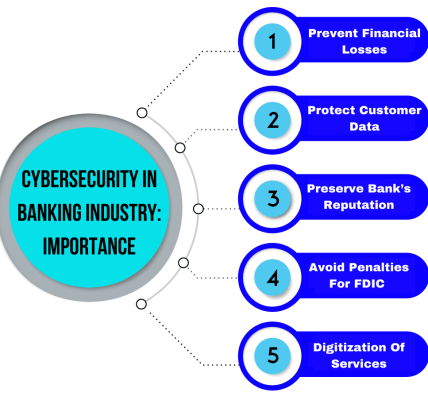The quest for a truly sustainable laptop is a complex challenge, one that requires innovation across design, manufacturing, and end-of-life management. HP has stepped up to this challenge with their latest Elite Dragonfly model, aiming to minimize its environmental impact through a multitude of strategies. This ambitious endeavor goes beyond simply using recycled materials; it encompasses energy efficiency, responsible sourcing, and a commitment to circularity. The new Elite Dragonfly represents a significant leap forward in the tech industry’s pursuit of environmental responsibility, pushing the boundaries of what’s possible in sustainable design and manufacturing.
The Core Pillars of Sustainable Design
HP’s approach to making the Elite Dragonfly more sustainable rests on several key pillars:
- Material Innovation: Utilizing recycled materials, including ocean-bound plastics and post-consumer recycled (PCR) aluminum.
- Energy Efficiency: Optimizing the laptop’s components and power management system to minimize energy consumption during use.
- Responsible Sourcing: Ensuring that materials are sourced ethically and responsibly, with a focus on reducing the environmental and social impact of the supply chain.
- Circularity: Designing the laptop for durability, repairability, and recyclability, extending its lifespan and reducing waste.
Diving Deeper into Material Selection
One of the most significant aspects of the Elite Dragonfly’s sustainability efforts is its focus on material selection. HP has incorporated a substantial amount of recycled materials into the laptop’s construction. This includes using ocean-bound plastics in various components, helping to clean up our oceans while reducing the demand for virgin plastics. The use of PCR aluminum further minimizes the environmental footprint, as recycled aluminum requires significantly less energy to produce than virgin aluminum.
The Impact of Recycled Materials
The incorporation of recycled materials has a profound impact on the laptop’s overall environmental footprint. By reducing the demand for virgin materials, HP is helping to conserve natural resources, reduce greenhouse gas emissions, and minimize pollution. The use of ocean-bound plastics also contributes to a cleaner and healthier ocean environment.
Beyond Materials: Energy Efficiency and Circularity
While material selection is crucial, HP’s commitment to sustainability extends beyond just using recycled materials. The Elite Dragonfly is designed for energy efficiency, with optimized components and power management features that help to minimize energy consumption during use. This not only reduces the laptop’s environmental impact but also extends its battery life, providing users with a more convenient and productive experience.
Furthermore, HP has embraced the principles of circularity by designing the Elite Dragonfly for durability, repairability, and recyclability. This means that the laptop is built to last, with components that can be easily repaired or replaced. At the end of its lifespan, the laptop can be easily disassembled and recycled, minimizing waste and maximizing the recovery of valuable materials.
The Future of Sustainable Laptops
HP’s efforts with the Elite Dragonfly represent a significant step forward in the development of sustainable laptops. By focusing on material innovation, energy efficiency, responsible sourcing, and circularity, HP is demonstrating that it is possible to create a high-performance laptop that also minimizes its environmental impact. The journey towards truly sustainable technology is ongoing, and the new Elite Dragonfly serves as a powerful example of what can be achieved through innovation and commitment. The future of sustainable technology hinges on continued efforts like these, and the Elite Dragonfly sets a high bar for other manufacturers to follow. The Elite Dragonfly shows how laptops can be made and designed for environmental responsibility.
Are There Challenges Ahead?
While the Elite Dragonfly showcases impressive advancements, are there still hurdles to overcome in the pursuit of truly sustainable laptops? Can the industry further refine its recycling processes to achieve even higher material recovery rates? Is it possible to create a completely closed-loop system where all materials used in laptop production are recycled and reused indefinitely?
Can Supply Chains Become Even More Transparent?
Are manufacturers doing enough to ensure transparency throughout their supply chains? Can consumers easily access information about the origin of materials used in their laptops? Is it feasible to implement blockchain technology to track materials from source to end-of-life, ensuring ethical and environmentally responsible practices at every stage?
What About Affordability and Accessibility?
Does sustainability come at a premium? Can sustainable laptops become more affordable and accessible to a wider range of consumers? Are there innovative financing models or government incentives that could help to bridge the price gap between conventional and sustainable laptops?
The Role of Consumers: Are We Ready to Embrace Sustainable Tech?
Ultimately, doesn’t the success of sustainable tech depend on consumer demand? Are consumers willing to prioritize sustainability when making purchasing decisions, even if it means paying a slightly higher price? Can education and awareness campaigns effectively communicate the environmental benefits of sustainable laptops and encourage consumers to make more responsible choices?
As we look to the future, one question remains paramount: can the tech industry continue to innovate and collaborate to create even more sustainable laptops, minimizing their environmental impact and contributing to a more sustainable future for all? The path forward requires ongoing commitment, collaboration, and a willingness to challenge the status quo. Can we answer the call?

